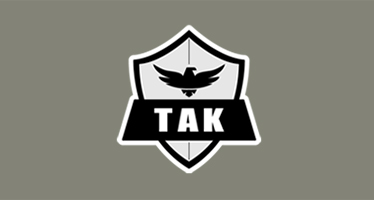Mission Success Starts with TAK

Streamlined Visibility
Whether from a Unmanned Aerial Vehicle (UAV) or from Unattended Ground Sensors (UGS), video can contribute significantly to SA, especially when it comes to red-force tracking (the opposition forces do not usually wear tracking devices so that we can plot their positions in real time). ATAK has a built-in video player that can play video from 95% of the video encoders on the market and supports a variety of protocols, such as User Datagram Protocol (UDP) multicast, Real Time Streaming Protocol (RTSP), and Motion JPEG (MJPEG).
ATAK can display video either full screen or half screen, the latter giving access to the 3-D map at the same time. If the video source is a UAV, and the UAV is also publishing its own position and sensor point of interest (SPI), those can be plotted on the map. Being able to see the position of the aircraft and know where on the map the camera is looking in real time, while being able to see the video on the same screen, is a huge boost to SA.
Improve Communication & Collaboration
The two most common communications methods are voice and text-based. While several plugins exists that provide VOIP within the application, ATAK does not have any built-in support for voice communications, mostly because the communications substrate and device (e.g., smartphone) usually has a native voice capability, whether it is a military radio or commercial cellular. ATAK does include a built-in chat application for text messages. Chat is a very common application, but most solutions require a server. Since ATAK was designed to be used in networks disconnected from any infrastructure, a server-less solution was needed. ATAK implemented a multicast-based chat service that requires no server. To support a wider variety of use-cases, we then extended it to be able to use point-to-point TCP in addition to the multicast-based chat. TAK plugins are maintained to allow in-app management of many standard issue military radios.


Customize TAK for your needs
Open technology development reduces duplication, enables cost sharing, increases transparency, and encourages collaboration. The balance between autonomy and control is founded in TAK’s platform architecture, where the core components of the baselines are centrally managed, while plugins managed by a decentral, community driven methodology . Although plugin management is decentralized, partners should develop within the TAK Product Center government repositories for continuous integration, testing, validation, and accreditation.
Learn more about TAK’s products used by the military

WinTAK-MIL
The Windows Tactical Assault Kit (WinTAK) is a software application and mapping framework for Windows devices.

TAK Server
TAK Server is a tactical information management platform that provides data access and encryption across disparate networks. TAK Server secures, brokers, and stores data in standalone and federated configurations. It is required whenever TAK clients are not operating in a peer-to-peer network or there is an operational need to encrypt and store mission data. Client plugins, such as DataSync and Execution Checklist, also require TAK Server.

ATAK-MIL
Android Tactical Assault Kit for Military
